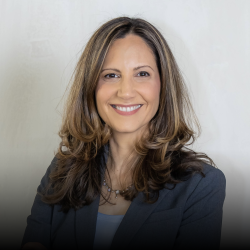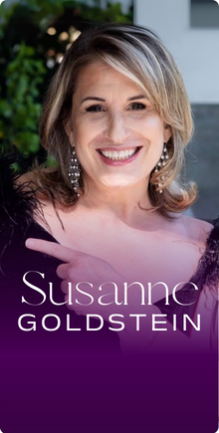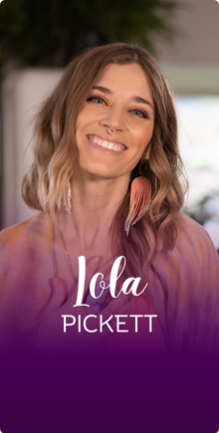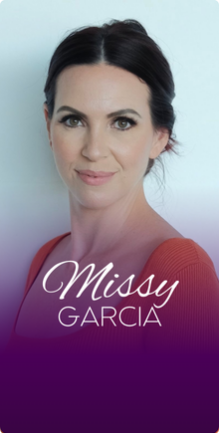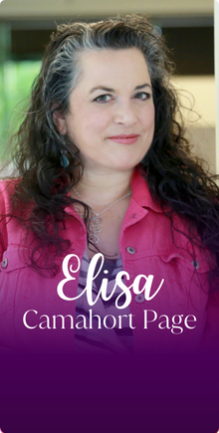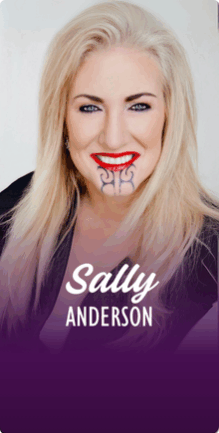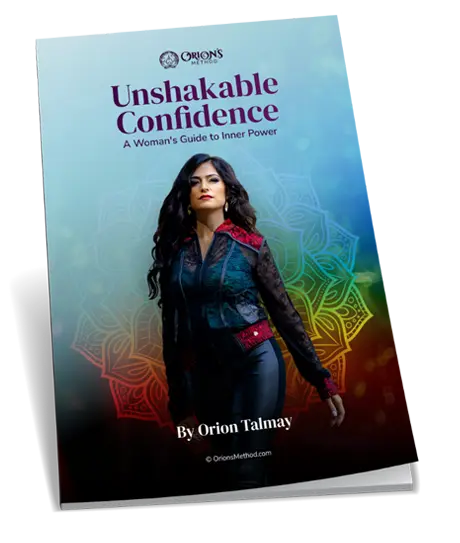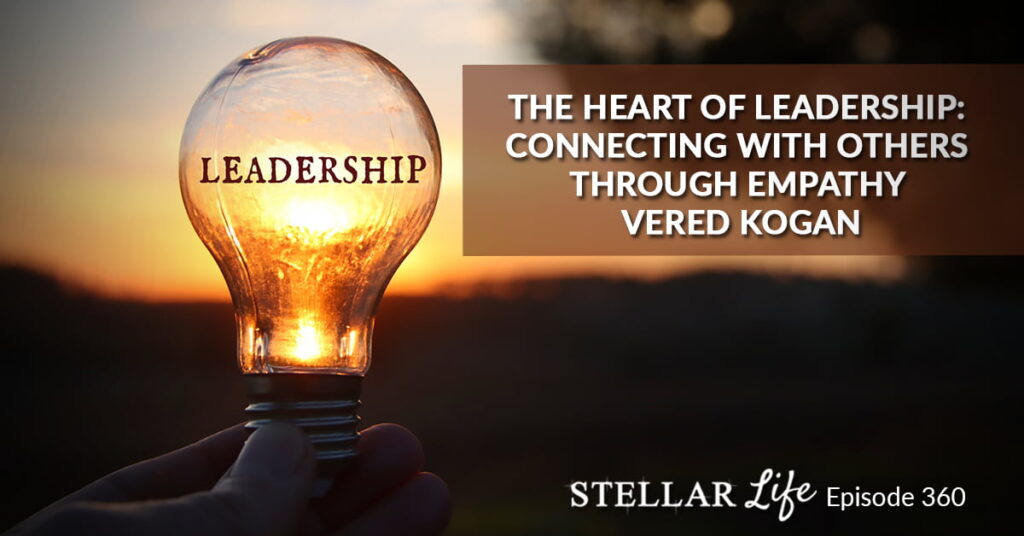
In this Episode
- [00:54]Orion welcomes Vered Kogan to discuss the mental and emotional obstacles to achieving goals and adapting mindset.
- [06:09]Vered shares her favorite childhood memory.
- [07:51]Vered and Orion talk about the use of NLP with their children, with Vered being a master practitioner and using it to coach her kids.
- [11:57]Vered differentiates working with high-achievers from people who are not entrepreneurial.
- [16:32]Vered defines leadership by sharing an exercise she does to activate her heart and shift her perspective.
- [21:56]Vered shares the wonders of activating your heart by doing the coherence exercise, including triggering the hormone DHEA and improving Heart Rate Variability.
- [26:35]Vered describes her self-care techniques and rituals.
- [34:47]Vered emphasizes the importance of accepting and embracing emotions rather than immediately shifting to positive thinking. She also explains how to write a goal.
- [40:38]Orion and Vered discuss the significance of considering both the conscious and unconscious mind when setting and achieving goals and overcoming limiting beliefs.
- [45:34]Vered shares her top tips for living a stellar life.
About Today’s Show
Hi Vered. Welcome to Stellar Life Podcast. I’m very happy to have you on the show. Thank you for being here.
Thank you so much. I’m excited to be here.
I’m excited, too. Before we begin, tell me one of your favorite childhood memories.
It was on a Saturday once when I was young, maybe about seven or eight, and just for no reason, my family decided to go to the beach. We didn’t have our beach clothes or anything. I think we were headed somewhere to visit somebody, and suddenly, my dad said, “Let’s go to the beach.” We stopped at a little store and got some chocolate and some treats. I remember just taking our shoes off and walking on the beach together. It was just unexpected and just so much fun. It’s a sweet day.
It’s nice. I love those memories. I feel like the more you focus on those memories, the more they show up because when I did 40 years of Zen with Dave Asprey, we focused on childhood memories. Suddenly, things that I didn’t remember for a long time or even didn’t know happened just showed up. Also, my childhood was difficult. It’s almost like my brain erased a lot of it. I forgot that I had a lot of great memories, too. It was a beautiful practice.
For me, I think about why that memory. I’ve had many other grander memories, but I think this one is because it was unexpected; it was unique because my dad used to work a lot. We weren’t used to going to the beach like that. I’d go with my grandmother, but it wasn’t like that. The things that are out of the ordinary or extraordinary, but positive emotions usually tend to be the sweetest.
Nice. What made you pursue this mindset? What made you pursue the subconscious, help people with their limiting beliefs, and take action?
A couple of things. First of all, when my eldest daughter, Maya, who is now almost 23, was in middle school, the teacher said to the kids, “If you want some extra credit, I want you to watch this TED Talk with one of your parents, and then you’ll get these bonus points.” The TED Talk was about the concept of growth mindset, Carol Dweck’s work.
I saw this with Maya and thought, “Wow, this is amazing.” I was already a coach at that point, but I didn’t work as much on the inner system in working with the unconscious mind, but that caught my attention. Then I started talking about that with other people.
I trained and became a trainer of Neuro-Linguistic Programming (NLP), hypnosis, and a variety of other modalities since then. I am fascinated with the power of beliefs because I am certain that when we have a conscious intention, heartfelt intention, coupled with a belief in that, meaning we don’t doubt it, we truly believe that it is possible for us that it tends to happen much more quickly. There’s a lot of research behind that as well.
Have you been using NLP with your kids?
One of them, Maya, is a master practitioner of NLP. I have. It’s very subtle. Anytime I become a coach mom and play that role, they quickly pick up on it. They’re very aware of language and language patterns to know when I’m doing something and when I’m not.
Most of the time, I tend to be a mom, but I sometimes ask permission if there’s an issue or if they want to. I say, “Do you want me to coach you, or do you want me to be a mom?” Sometimes, they say “Coach,” and sometimes, “Mom.” When they say coach, I use NLP and other tools to help.
The things that are extraordinary but positive emotions usually tend to be the sweetest.
That’s really cool. I like that they have that distinction, and you have that distinction cause it’s so easy to mix the two. I like that. Even with my little one, I find using NLP with him. I’m not a master practitioner with NLP, but I’ve been studying and using it extensively. I appreciate the power of language and the power of words because words are like little spells. They can completely change your future, right?
That is correct. It’s words, thoughts, and behavior. Typically, it starts with the thoughts that then drive the expression of the thought, be it in words, behavior, or other behavioral actions.
What do people usually come to you for?
These days, I typically do training and keynotes. That’s the main thing these days. I also primarily coach CEOs these days. They come to me often because they’ve seen one of my trainings where I guide people through techniques for releasing limiting beliefs and becoming much more resilient to different tools.
They’ll come usually when they’re like, “I have this issue or this problem, and I’ve tried everything, and I just can’t get myself to change it.” Usually, we work with the inner system to understand the root of the problem, and we help to release or soothe that. Then, the behavior changes immediately because they get the learnings from the issue or the problem.
Typically, they come because there is some obstacle that they realize they’re not quite conscious of. It’s almost invisible, but something is blocking them because they tend to be very high achievers. If they’re not getting the desired results, they know there’s probably something else to look at. It’s hard to do alone because you’re just not conscious of it.
We all have blind spots. That’s why I have coaches who are the most successful athletes and high performers. They have that support system to mirror back to them what they just can’t see.
When we have a heartfelt intention coupled with a belief in that, it tends to happen much more quickly.
Absolutely. It’s like fish in water. You can’t see the outside. What is the difference between working with CEOs and high achievers and working with people who are not entrepreneurial and didn’t experience the level of success that your clients experienced?
Truthfully, there isn’t much difference. There isn’t because we all have stuff. Oftentimes, they got very successful because of some of those programs, which were adaptive for a while, but then they brought to the point that they’ve got a lot of stuff, but maybe they are not experiencing joy or fulfillment. Maybe they’re just really stressed out, and that’s not sustainable, and there’s harm to their relationships or health.
Truthfully, we’re all very similar. I choose to work mostly with senior leaders because they also greatly influence many other people, directly influencing what they offer them in terms of training, how they speak to them, and their energy.
That’s my greatest ripple effect, if you will, cause I enjoy working with everybody, but when you work with someone who has influence. They are even more aligned and at a higher consciousness; typically, their energy impacts many other people and helps others to be more coherent. That’s my sweet spot right now in terms of coaching, which I enjoy the most.
What do you think are the keys to outstanding leadership?
There are many keys. Certainly, there are many leadership competencies that we can speak about. Some of the ones that are most important in the work that I do in terms of the impact on a client’s effectiveness are what we’ll call some of the more creative competencies rather than reactive.
Things like having empathy, empathetic listening, being very collaborative, having curiosity, having more of a system view of things, meaning seeing the bigger picture more objectively. Things like that.
On a personal level, leaders need to be as coherent as they can, to be very mindful of how their energy impacts others and what they’re feeding the field. “Are they in fear and doubt? Or are they in curiosity, empathy and other aspects of love?” Because that impacts how others perceive the situation, what’s possible for themselves, their team, their organization, and their behavior.
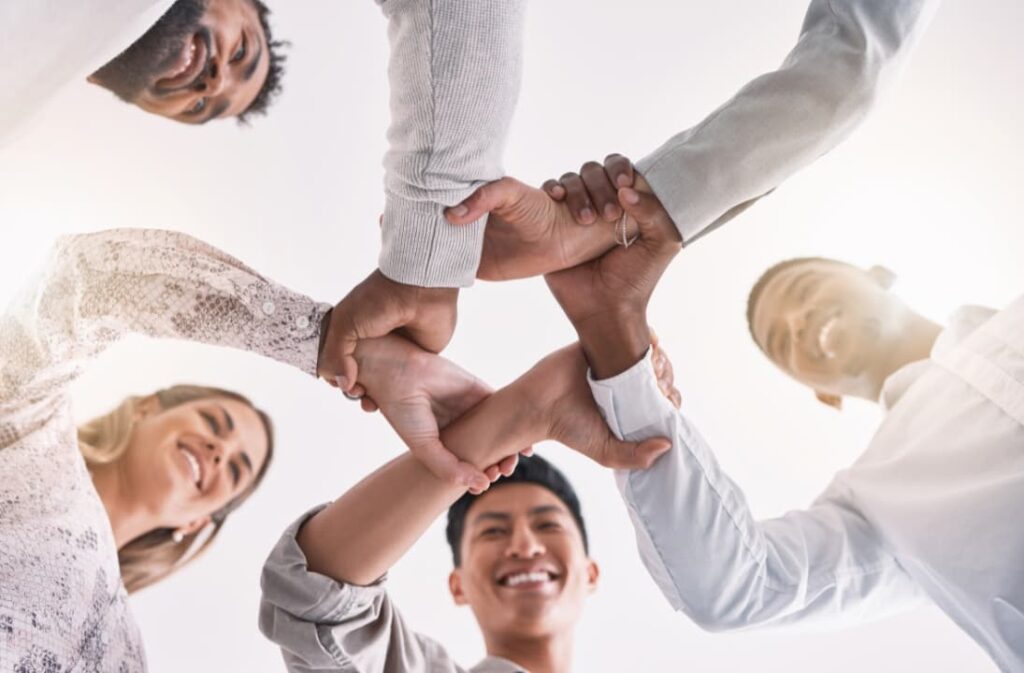
When we do our work in terms of self-appreciation, self-compassion, and building our resilience capacity, we often become much clearer about things.
We’re less likely to get into the drama when there is an issue. We’re less likely to operate out of our limiting beliefs, and we can connect with people at a heart level. And people feel safe. When people feel safe, they thrive because that’s when creativity can unfold. That’s when we’ve got more collaboration, less judgment, defensiveness, and blame.
Especially during times of change. We want there to be an environment where people feel psychologically safe. They know that the leader has their back no matter what. Then, they’re more comfortable taking risks or making mistakes, which is what will happen when something new is introduced.
It just makes for a more joyful environment where we can thrive. Not only to get to the other side of the change but also because we’ve built some resources personally and collectively. How do we manage change? How can we handle things better? Usually, as an individual and a team, everyone comes out on top, and that’s when organizations can thrive and create new solutions for our world.
Leaders need to be as coherent as they can, to be very mindful of how their energy impacts others and what they’re feeding the field.
I’m sure you see yourself as a leader because you are, and I do, too. Yet I find myself sometimes when I have my stuff to deal with, to get out of my way and be the leader, like getting into somebody else’s space or posting something positive online. What do you do? How do you handle tough times and leadership?
I want to start with my definition of leadership because it doesn’t necessarily mean a role in an organization. Everybody listening to us today is a leader. It starts with self-leadership, managing our energy intelligently, which means being a choice and being as coherent as possible.
And, of course, influence. Leadership is really about influence. How do I, like everybody else, have good and bad days? I play what I call ‘the game’ as much as I can. Anytime I notice that I’ve shifted to some depleting, unpleasant state, I pause, label what’s happening, and activate my heart.
I will do a quick coherence technique or one of several others to shift my heart rhythms and perspective. I know that if I’ve been triggered, it’s because there’s some lesson for me to learn because every emotion brings gifts. The quicker I get the gift, the quicker I can say thank you and let it go. Again, I have more resources to handle the situation.
You can take us through an exercise to activate our hearts. I would love to activate my heart.
Let’s do it. We can play a little bit. Is there a particular, let’s say, situation right now that, as you think about it, there is a little incoherence going on, like something that doesn’t feel so good?
No.
You don’t have to share it out loud.
No, that’s okay. There is nothing specific right now. I’m thinking in general when things hit when life hits.
I ask because sometimes we can work with a specific situation to help you shift your perspective, but we’ll do it more generally. I invite everybody listening to pause for a moment—go inward for a moment, begin to notice your inner experience in this moment, and label how it is that you feel.
You can notice that maybe there’s a word that best represents a feeling, maybe a sensation in the body, maybe a thought coming through. Just notice what you are feeling and what you feel if you’re willing to share right now.
I feel a little tired but also very connected to the field. I can’t explain it. Like connected to the quantum field.
When leaders are aligned and clear in their mission, their energy can inspire others. Share on XHow does it feel emotionally to know you’re connected to the quantum?
It’s amazing. It’s really cool.
Your heart is already activated. We’re going to activate it even more. I invite you to go ahead and focus your attention on the area. For everyone listening, I invite you to do the same.
I want to feel all the love, all of it.
That’s right. Focus on that beautiful, bright light of your heart, and just imagine that your breath is flowing in and out of your heart or chest area, breathing a little slower and deeper than usual. Keep doing that as I talk. If it’s safe, you can feel free to place your hand over your heart area and find an easy, comfortable rhythm, breathing in and out of your heart.
As you stay focused in your heart, sincerely attempt to experience a regenerative feeling, such as appreciation or care for something or someone in your life. You can re-experience the feeling of love or a connection to something or someone.
Focus on a happy memory, like a happy childhood memory, for example, as you asked me, or a special experience, an accomplishment, a place in nature, or just breathing a feeling of calm and ease in and out of your heart. Expand that even more. Send that love into every sweet little cell in your body.
My greatest ripple effect is working with someone who has influence and at a higher consciousness because their energy impacts many other people and helps others to be more coherent.
Just notice how you feel and what’s different in your body, emotions, and thoughts. Just notice what, if anything, has shifted. When you’re ready, I invite you to open your eyes, if your eyes are closed and come back to our conversation.
That was beautiful. Physically, I felt like a wave. I think my voice is better now. It’s more grounded, and I felt like, “Who’s that?” That’s nice. I felt like a heatwave all through my body. Just expansion, but also more focus at the same time. It felt amazing.
Thank you for sharing. As everyone was listening and you were following along, if they could activate that heart feeling, there are some nice chemicals, one of them being DHEA, a very happy hormone. It’s also a vital hormone that helps us feel better.
In addition to that, our brain, the left and right hemispheres, are more coherent because there’s a nice, smooth heart rate variability pattern traveling up to our head brain.
Our head and brain have duality. There’s left and right. Left is where we have, for example, time, that sense of temporality—past, present, future. We have judgments of values—what’s right, wrong, what’s good, what’s bad, which, of course, is important for us for our survival to be able to have those.
At the same time, what we want is to have as much as possible to be in a whole brain state so that we also bring some of the right hemisphere, things like more of the in-the-moment experiences, more of that connection, as you said, to something bigger than ourselves, our imagination, things like that.
Ideally, we want to have both together, which is the state of optimal performance and optimal health, because our immune, respiratory, digestive, hormonal, and nervous systems are all working synchronically.
That is why, typically, we feel lighter. We feel sometimes it’s warm, sometimes it’s not, but we’re often just less attached to what we were attached to before if something created an unpleasant emotion.
Let’s say I’m feeling a little sad. The client conversation I had right before our interview—it’s a client whose son is a senior, and he had his last wellness checkup with the pediatrician today.
When we do our work in terms of self-appreciation, self-compassion, and building our resilience capacity, we often become much clearer about things.
I said, “Well, how are you feeling?” She said, “Well, I feel sad, a little empty, a little lonely.” Once we got to it, we did a quick coherence. She said that as soon as we did that right, we paused, labeled, and activated the heart, and then she yielded that over-attachment.
She’s like he’s just going off to college, and the whole thing shifted around the loneliness of him being away. She focused on how much she’d get to see him. The whole perception changed. That’s a good thing to do, to give ourselves. To get the lesson and find more peace and harmony within whatever is happening outside of us.
That’s beautiful. A lot of people are going to do it. “I need to do something to change something.” They do-do-do, and it feels like they’re on a hamster wheel—nothing shifts.
But changing your state and physiology comes first, and then comes the strategy and what you must do. All success starts with that expansion, the heart expansion, and the heart connection. In this elevated state, she could think of different thoughts and change her belief system.
She released some of the overcare, the overattachment to what was happening, and some of the narrative that was going on in her mind. To change some of that narrative, the best thing we can do is pause and label how we feel—we’re in the present moment, connected to our unconscious mind—and activate the heart.
At that moment, we’re able to receive guidance. We’re able to receive intuition. That then guides us as to what decisions to make. When I do the doing, I’m doing the doing in a way that is even more productive. We are more connected with people, more present with people, and ultimately able to get better results. But in addition to that, our immune system is functioning better. We’re healthier in the process.
How do you change your state every day? Is this what you do? Do you just connect to your heart? Or do you have other rituals like writing or journaling?
My first podcast here was Bill Donius. He gave that exercise of non-dominant handwriting, where you write down an answer with your non-dominant hand, then connect to your right brain, to that place of creativity, and you get different answers more aligned with divine guidance. What do you do to get answers to get inspiration?

I’ve got some things that are more in the domain of rituals and some that are more like firefighting when something comes up. Sometimes, if I’m very triggered, a quick coherence may not be enough unless I catch it really fast. If there’s something that there’s a lot of attachment to, sometimes we do tools like emotional freedom techniques or havening techniques, which are another psychosensory modality.
What is that? What are havening techniques?
Havening techniques are a therapeutic modality. We use touch to the face and arms, like a moving hug or the palms of the hands, to self-regulate. It’s also used for the release of trauma. When we do the havening touch, it’s very soothing. It sends a very slow brainwave frequency, like an electrical signal to the amygdala telling the body we’re safe.
In terms of rituals, I do have a ritual in the morning. Some of it is physical movement. But before that, I always start with a heart lock-in. It’s similar to what we did on coherence. Only where I end is that I radiate the feeling into the field.
I radiate, let’s say, compassion and so on into the field. Then I imagine my day, so I imagine being with you. I imagine being at the presentations or with clients or with my family, whatever it is that I’m doing, and being present, being mindful, and being in a coherent state. That I do as soon as I wake up.
Sometimes, if I need to go to the bathroom, I’ll go there and focus on gratitude, wash my hands, and then come right back to do the practice before I get too much into that beta mind, which is a very active mind of my to-do’s and all that.
Anytime I notice that I’ve shifted to some depleting, unpleasant state, I pause, label what’s happening, and activate my heart.
I have movement. Whether it’s yoga or stretching, I do some things on the physical side of things. I also have a goal statement that I visualize. Sometimes, I’ll do it in that sense of reading to myself like I already know it by heart, what my goal statement, the one that I’m focused on now, and I imagine it in my mind’s eye.
Some days, I watch my mind movie. If I have more time, depending on how much time I have in the morning. I have a mind movie that Maya, my eldest daughter, created for me. She’s got a company that does these mind movies, which are essentially movies of your future to prime that neural circuitry, get the body ready for the change in advance, and release any fears or resistance.
From a ritual perspective, it has to do with coherence. It has to do with visualizing my future and with movement. Then, throughout the day, I play, pause, label, activate my heart, and yield some of the over-significance to things because I don’t want to create new programs.
I’ve done a lot of work to release a lot of unconscious patterns, and I want to make sure that I, to the best of my ability, don’t take on fears that I don’t need to take on, that I don’t acquire new maladaptive programs. For that, I need to make sure that I’m as objective as I can be so that I’m not telling myself stories that are not true.
You have a strict mindset diet. I like that.
I’m human, right? Sometimes, I forget and am just like everybody else, but I do my best to check-in. When I notice an energetic shift, I pause and think, “What’s happening?” Sometimes, I’ll do a little havening or quick coherence because I know my energy is everything. The most important thing is my energy. That’s all I have, and it dictates my whole life. How I think, how I feel, and how I behave is all driven by my energy.
I’m very much empathic. I’m an empath. Sometimes, I let the world around me influence me. I like what you said. And I, too, work so hard on releasing many patterns. But how do you shield yourself if you are extremely empathic like me, from world events that are taking over, really difficult things, or somebody else’s suffering, and not take it on into your field?
When you open your heart, guidance finds its way to you. Share on X
Being an empath, there are two sides to the coin. On the one hand, there’s more sensitivity, as you said, to other people’s energy, suffering, and so on. The other side of the coin is that you’re also more connected to your true self, your higher self—what you call the quantum. That’s a beautiful gift.
When things happen, consider that, and I do this myself with what’s going on. Of course, I limit the amount of news that I watch. I know I have enough to know the events of the world, but not enough to the point that I listened to the interviews of the suffering because I don’t want those images in my mind. I limit my intake of that.
But clearly, when I have an attachment to something or someone, or I care, I want to make sure that my care is healthy and it’s not what, again, we would call overcare.
Healthy care is sending compassion to everyone that’s affected. It is being able to say, “Okay, what can I do in this situation? Is there something that I can do to support people? Is there something that I can do to manage my own response to the situation?” As much as possible, I want to tune into my self-efficacy. “What can I do in a situation like this to feel better and support others?”
Now, when it gets to overcare, which you did, for example, let’s take October 7th. We talked about that briefly. There was a lot of overcare, so I needed to do much work. I needed to release a lot of terror and deep fear. I needed to release deep sadness, anger, and so on.
We want to have both a state of optimal performance and optimal health because our immune, respiratory, digestive, hormonal, and nervous systems are all working synchronically.
The more I could do that, the more I was able to be objective, to have forgiveness and compassion. I find that the more we’re attached to something—to an idea, a person, a people, a thing, whatever that might be—typically, the more we get incoherent, the more it’s creating suffering for us.
We want as much as possible to realize, “Okay, this is happening for a reason.” I may not be able to change the events in our world directly, but I can certainly manage my own response to that and my own energy. That does make a difference, not only for my health and my ability to be present with my family, to be productive with my clients and so on, but also when I’m radiating more love into the field. It does help everybody.
That is so beautifully said.
It absolutely does. It changes the energy in the field.
It’s so beautiful the way you said it. I resonated, and I felt your determination to be the light. That’s almost like you’re a light warrior, and you’re blocking the videos. You’re blocking the attachment. It’s just beautiful.
It’s all about you going from internal to external, into, “Okay, I take care of myself, and now what can I do for others? How can I serve more?” That is true leadership when one can maintain one’s state and be there for others.
There is also a place for this, like if it’s okay to experience all our emotions. It’s even okay to stay with them for a little bit, just not too long, because you have to bring yourself up to who you are, your light, and the people you serve in the world, including your loved ones.
You’re spot on. Before it’s not so much that I blocked my intake of news and all of that, of course, but it’s not so much blocking the energy in terms of, let’s say, the sadness or the fear, if that makes sense. I want to pause and label that.
First, I need to accept it because if somebody immediately goes to shift, let’s say positive thinking, let me think about what’s good in the world and all of that, without first being with the feeling, they’re missing out. They’re missing out on the sweet lesson that the feeling is there to give them, maybe about themselves, maybe about their ability to take better care of themselves, to have better boundaries, to whatever it might be. Every emotion brings a different set of gifts.
Healthy care is sending compassion to everyone who’s affected.
As you said, we don’t want to hold on to it too long. We want to say, “Welcome feeling. I welcome the sadness, the grief, the shame, the guilt, the disappointment, the frustration, irritation, whatever it is that I’m feeling in my life. I want to welcome and embrace it. I do that by activating the heart. And then that allows me to release it if that makes sense. It softens it.
Yeah, it makes sense. It’s beautiful. You have your goals in front of you every day. If somebody wants to pursue a goal and be very good at manifesting, you mentioned mind movies: electronic vision boards, movement, and connecting with your heart. Is there anything else that can help one pursue their goals?
First, know it’s okay if you don’t know your goals. Many people and I still have some things in my life, some related to work, that I’m not sure exactly what I want. There are some things I do know and some things I don’t, so sometimes, pausing is also good. During that pause, I was very curious and asked for guidance.
When we’re coherent, to say, “Hey, what’s the next step for me?” I should not rush into doing or even rushing into writing a goal because that, too, is a form of doing. Sometimes, a goal could just be very loose. I want to feel more joy. I want to write. It could be a little bit looser than a specific goal.
Once somebody has a sense of what they want for their health, relationship, career, business, and so on, the important thing is to say, “Okay, how do I want to feel? When I have that financial goal, car, or whatever, what will that make me feel?” And as much as possible, to be in that feeling.
Let’s say it’s excitement or gratitude. There are things for me to be excited about today, even before I get the car or the vacation or whatever, or to be grateful for as much as possible as we can feel those feelings that are soothing to the body.
The unconscious mind needs specificity to the best level we can give it. I know that I want to write a book, and I want to complete it by a certain date or roughly, and I want it to be a New York Times bestseller or whatever it is that I desire. Then I would say, “All right, Orion, how will I know I got it?” You know this from NLP. What is the last step that has to happen to know I have completed this goal successfully?
When we grow too attached to people, objects, or ideas, we can lose our own sense of self. Share on XBecause the unconscious mind needs that image, the faculty of the imagination. I would say, “All right, what will I see with my eyes? What will I hear with my ears?” Let’s say I did it, even the inner voice, or whatever that is. “How will I feel? Maybe what will I smell? What will I taste? What will I touch?” That is the goal.
It’s writing the goal as if I’ve already achieved it. As if I’d already taken that last step. As much as possible, from then on, visualize it. You can do a mind movie about that. Music and images that correlate with that final step have to happen so you know you successfully achieved your goal. In priming your mind and body in advance of an event, you are creating more safety.
If you think of it as a scale, like the apothecary scale I have behind me, if one side is desire, it’s that goal you said. If somebody knows what they want or how they want to feel, then on the other side, there is some resistance to that.
Maybe it’s limiting beliefs like, “I’m not good enough. I’m not worthy. It’s going to take too long. I don’t know how to do it; I failed all these programs before.” Then, what we want to do is to work with both sides. We want to write a goal as if we’ve already achieved it, visualize it, and take actions that are related to that goal.
If somebody wants to write a book, they’ll download a course about how to write books. They’ll talk to people, or they start writing, or they’ll do things. At the same time, we also want to work with the resistance side because we want the moment to be the momentum that will get us what we want.

I also want to notice, “Hey, as I think about that goal, are there any limiting thoughts? Are there any emotions that I feel?” That’s when we get to do that resistance work.
You asked about goals. I gave you both sides of things because it’s important. It’s not enough to only focus on what we want. We also want to work with the shadow side if anything might be slowing that down or resisting us. If our unconscious mind doesn’t believe that we’ll be safe to have what we want, it may block us from accessing guidance that will help us to achieve that even more easily and quickly.
Safety is a big part because what usually blocks us is fear. Like you said, if we go into the future and imagine positive scenes that are not only beautiful and exciting but also extremely safe, then we change the story in our minds.
I heard a podcast. I forgot the guy’s name, but he said there are many definitions of mindset, but his definition is the story we tell ourselves. When we look at that vision, we change the movie. We change the script.
We have a different ending and react to that scene completely differently—my goodness. We are living in a matrix. Everything is mind. Everything is a mindset—our whole existence. It’s pretty wild.
That’s right. And at any moment, we have a choice.
What are some goals you already achieved that you thought were impossible in the past?
My energy is everything; it dictates my whole life.
There are a few. One of them is financial. When I started this business, I didn’t think that I could make a certain amount of money at first. I set a challenge for myself. I set that goal, and I imagined it. Through synchronicity in many events, I earned more than that that year.
Many things were impossible. There were many things that I achieved that were very sweet, and the achievement surprised and delighted me. But these days, there’s not a lot that I consider impossible. It is impossible because I believe everything is possible at this point.
Another sweet moment was when I first started coaching. I did it on a volunteer basis. It was career coaching for women at a local nonprofit here in Phoenix. I was helping them. It was through a career transition before I even got certified as or trained as a professional coach.
It was at an organization called the Fresh Start Women’s Foundation. Throughout the years, I would volunteer there. Then, I volunteer to give lectures and so on. Then, fast forward many years later, coaching the CEO and then being invited to their annual gala with my husband, where the CEO shared a speech that I helped her with, which helped to raise more money than they’ve ever raised in previous years. Just being there in that moment, “Wow, almost 20 years ago, I was there helping women and helping myself because it gave me so many gifts to do so.”
It was like a full-circle moment, and it was just really sweet because it had a lot of meaning. The impact of what they do for women has a lot of meaning for me because it also helped me personally. So that was a sweet moment there. There are many accomplishments. It’s like the first time you do something like a big keynote or the first time you do this or that. Those are all amazing.
For example, another one is when we were in Spain years ago. We were doing some canyoning, and there was this thing where we would jump into the water. It was so high, and I was terrified, completely terrified. I thought, there’s no way I’m going to do this.
Every emotion brings gifts. The sooner you acknowledge your emotions, the sooner you will find peace. Share on XThey had an option for people to just slide down and have a two-meter jump rather than a five-meter. It was quite a big jump for me. But my daughter was in front of me. When I said I was unsure if I would do it, she said, “All right, I’m going to do the other one as well. I’ll do the slide as well.”
I remember saying, “No, I need to do this. I need to do this for myself, but I also need to do it for her to see that we can do this.” It’s a mindset. This was many years ago before I learned many things that I now learned. I remember just jumping, and I did it. It was such a cool moment because I had terror before doing that.
That’s so beautiful, and sometimes we’ll do things for other people more than we’ll do for ourselves, especially as moms. It’s really cool. I’ve done many things like that in my life, too. Yours wasn’t intentional, but I intentionally went like walking on coals, walking on glass, jumping from a telephone pole, and all those things to break that fear. Because if you do something like that and it’s impossible, then what else is possible? It trickles into all areas of your life. It makes you stronger and more resilient.
It’s nice when you live a comfortable life, but it doesn’t get you as far as when you do the uncomfortable things. My new affirmation is I can do hard things. I started using that lately, and I like it. I love that.
What are your three top tips for living a stellar life?
Number one, love yourself. That means saying no to things that deplete your battery and deplete your energy and saying yes to the things that your heart is calling you toward.
Be patient, curious, and kind to the best of your abilities.
Number two is to notice your story. Notice what you tell yourself, the narrative. If you ever find yourself in judgment of yourself for others, challenge that story. Activate your heart as we did, and just invite yourself to consider other possibilities and other perspectives because chances are that story is not true.
The third is to be kind to others. Everybody suffers in their own way, even those who do very bad things. Typically, it’s driven by trauma, maybe even intergenerational trauma, and everybody’s just trying to do the best that they can. Be patient, curious, and kind to the best of your abilities.
I really enjoyed talking to you. This has been amazing. We know each other from before, but more on a surface level and meeting in conferences. It was really nice to have a heart-to-heart conversation with you. You seem like a person who walks your talk. You come from a place of love. You’re caring, you’re compassionate, and that’s very beautiful.
Thank you for being here, and if people want to connect with you, go through your training, coach with you, where can they find you?
The first thing is my podcast, which is called The MINDset Game. I really invite people to access that. There are a lot of amazing interviews and a lot of resources around how to activate the heart, how to set goals, how to live your best life, a stellar life, as you said. That’s on themindsetgame.com.
My business is called Momentum Institute. People can go to momentuminstitute.com and learn about the many different coaching training programs. I’m also a keynote speaker and happy to, like I said, share many resources. There are Forbes articles on there, lots of videos, articles and things that hopefully will help whoever needs them.
Beautiful. Thank you, Vered. Thank you so much. I really appreciate you. Thank you for being here, sharing your heart with us, your expertise, and your wisdom.
Thank you. It felt like such a very calm conversation like we were just sitting at a park and talking, and I just loved it. I thank you for the good work that you do, helping people to just find their truth, live their truth, and find their joy.
Thank you. And thank you, listeners. Remember to love yourself enough to say yes and love yourself enough to say no, challenge your story, activate your heart, be kind to others, and have a stellar life. This is Orion till next time.
